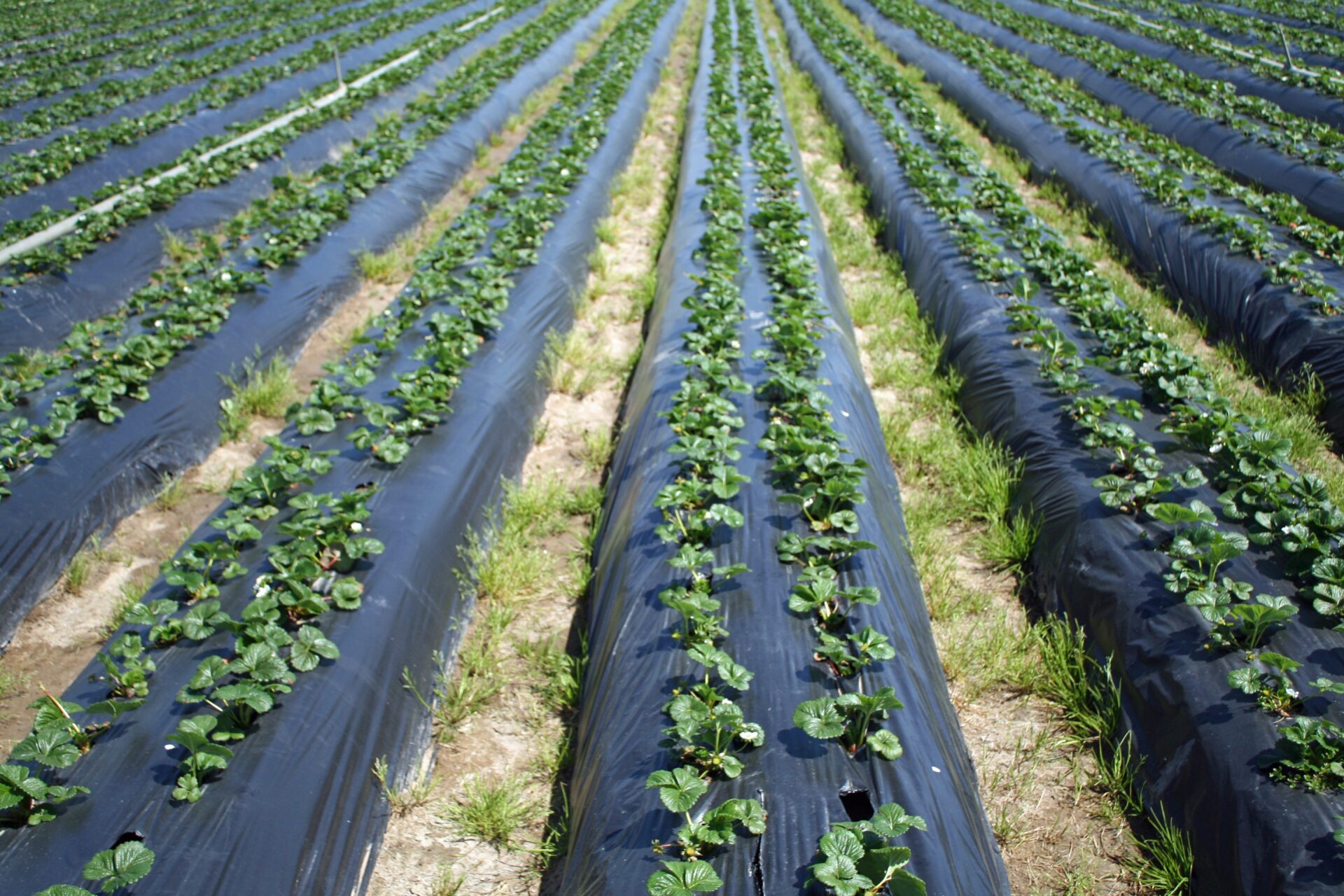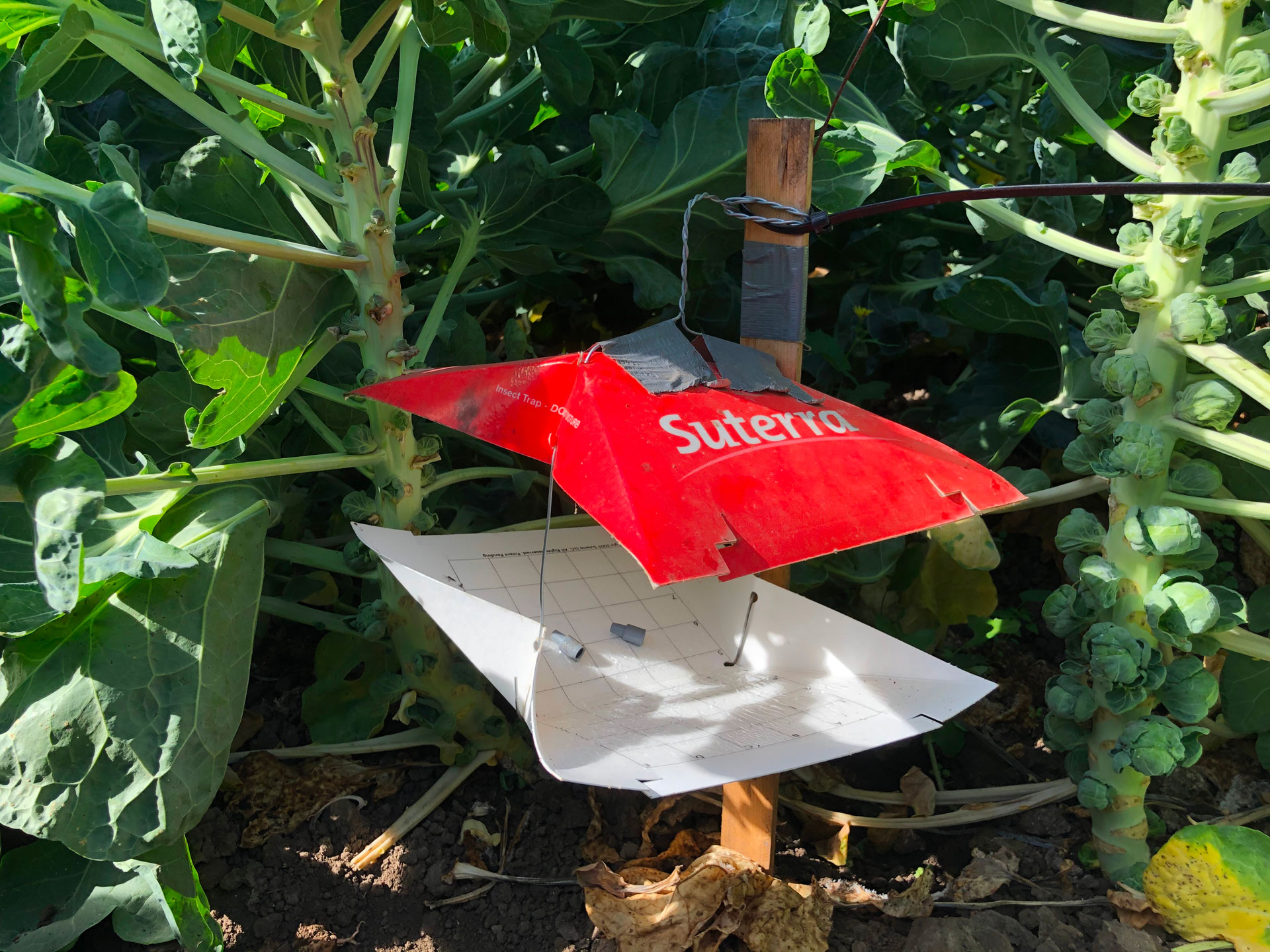
A threat to California’s strawberries for 15 years now, Fusarium wilt is challenging to control. Organic growers face even more difficulties in eradicating the underlying fungus.
Fusarium wilt is caused by the fungus Fusarium oxysporum f. sp. fragariae. It causes wilting of foliage, plant stunting and drying and death of older leaves; however, the younger leaves in the center of the plant often remain alive. The plants can eventually die from the infection. According to the University of California, plants bearing heavy fruit loads or subjected to stress often show the most severe symptoms.
UCCE Strawberry and Caneberry Farm Advisor in Santa Cruz County Mark Bolda explains there are several types of Fusarium, but only one that is of real concern to strawberry growers.
“What was very important for people, they get a soil report back that says ‘Fusarium’ on it. Well, there’s tens of thousands of Fusarium. There’s actually some that are beneficial. Most of them don’t do anything,” Bolda explained. “Then for strawberries, there’s fragariae. It is host-specific, meaning it only infects strawberries. And that’s the one that’s been expanding by leaps and bounds here on the Central Coast.”
He said while Fusarium wilt was first found in southern California in 2006, the fungus fragariae was first found in the Central Coast growing area about six years ago in a single field.
“Now, it’s 10, maybe even 100 fields that are infected with this pathogen, and it’s continuing to move,” he said. It was found first in the sandy soil of Watsonville. “That’s been kind of the epicenter for the whole thing. Most growers have it and they have it heavy.”

Treatment Options
Treatment of the pathogen is difficult, even for conventional growers. Traditionally, growers would fumigate with products such as methyl bromide and chloropicrin. Bolda said anecdotal evidence showed those treatments were containing the fungus. However, California law changed and phased out methyl bromide in 2016.
“But, I’ve been talking with some growers who have used methyl bromide and chloropicrin recently because they have a research exemption or some kind of special permit and they’re getting [fragariae] too,” Bolda said. “So, we are now in the post-methyl bromide era and now it’s just chloropicrin, which is fine because it was always doing the heavy lifting in controlling soil pathogens, but those soils get [fragariae] too.”
He said he and researcher Dr. Peter Henry with USDA and collaborating growers have looked at using crop termination. This method kills the pathogen by using the soil fumigant metam potassium (KPam) at the end of the season when the infection is at its heaviest. Bolda said the method can work on its own but is most effective when used with chloropicrin.
However, those fumigant options are not available for organic growers. So, what can organic growers do? Bolda said to start by knowing what you have.
“If you’re going into the field and you’re going to plant, you should know if you have this Fusarium or not,” he said. And if you do have Fusarium, Bolda said, “Rotate away.”
“Fragariae is form specific to strawberries. It grows on everything else, but not very well,” he explained. “So, if you rotate away (from strawberries) for a while, two to three years, minimum, those populations of Fusarium should go down.”

Resistant Varieties
Bolda also pointed out that many of the strawberry varieties now are resistant to Fusarium.
“A lot of people are now switching to the Fusarium-resistant varieties because even in the presence of fumigation, they’re losing too many plants. But what happens is, at least within the University of California, our best, most flavorful varieties are not the resistant ones,” he said. “So if you’re a direct marketer of strawberries, you want to identify and grow the best tasting, most productive varieties, and those are not resistant. There have been some new ones that have come out which are resistant, but there have been some questions about the flavor. And we’re talking strawberries. We’re not talking spinach. It’s all about flavor.”
According to UC data, field tests have shown that cultivars such as Fronteras, Portola and San Andreas are resistant to Fusarium wilt. Albion and Monterey are susceptible.
Bolda also pointed out that even though a cultivar is resistant now, it may not be resistant in the future.
“We’re not done here,” he said. “We’ve seen pathogen resistance break in other crops. It hasn’t happened in strawberries yet, but it could. As we move forward, that resistance may be overcome by just all the genetic variations within the Fusarium population.”

Additional Considerations
Another method to managing Fusarium in strawberries is to manage crop stress. Bolda explained the Fusarium affects the vascular system within the plant, which is why growers tend to see the problem expand in June and July when the plant is producing a lot of fruit and drawing a lot of water.
“So, the plumbing is getting backed up by this disease and it’s making it more difficult to draw water,” Bold explained. “You’re not going to void the problem, but you can mitigate the problem by making sure that plant has enough water.”
Bolda and Henry are also researching the effects of soil temperature on Fusarium. Fusarium needs a warmer soil temperature to thrive, so they are researching the effects of cooling the soil down using a light-colored plastic to reflect heat away from the bed.
A critical point Bolda said he wanted to make was if a grower does have Fusarium, they must be diligent to not spread it.
“Especially if you’re an organic grower because you have no way out, if you have a tractor and you move it from a contaminated field to a field that’s clean, you are contaminating that clean field,” he said. “That’s a big mistake and it’s completely avoidable.”
He mentioned a grower in the epicenter of the Central Coast Fusarium outbreak with little or no Fusarium in his field. “Because he’s super strict about what comes in and out of his field,” Bolda said. “This is backed up by Tom Gordon and his researchers up at UC Davis. They tested people’s shoes and shovels and, sure enough, they were transferring Fusarium from one field to the other.”
Bolda said a key for all strawberry growers is to remain vigilant in finding, treating and preventing Fusarium at all stages.






